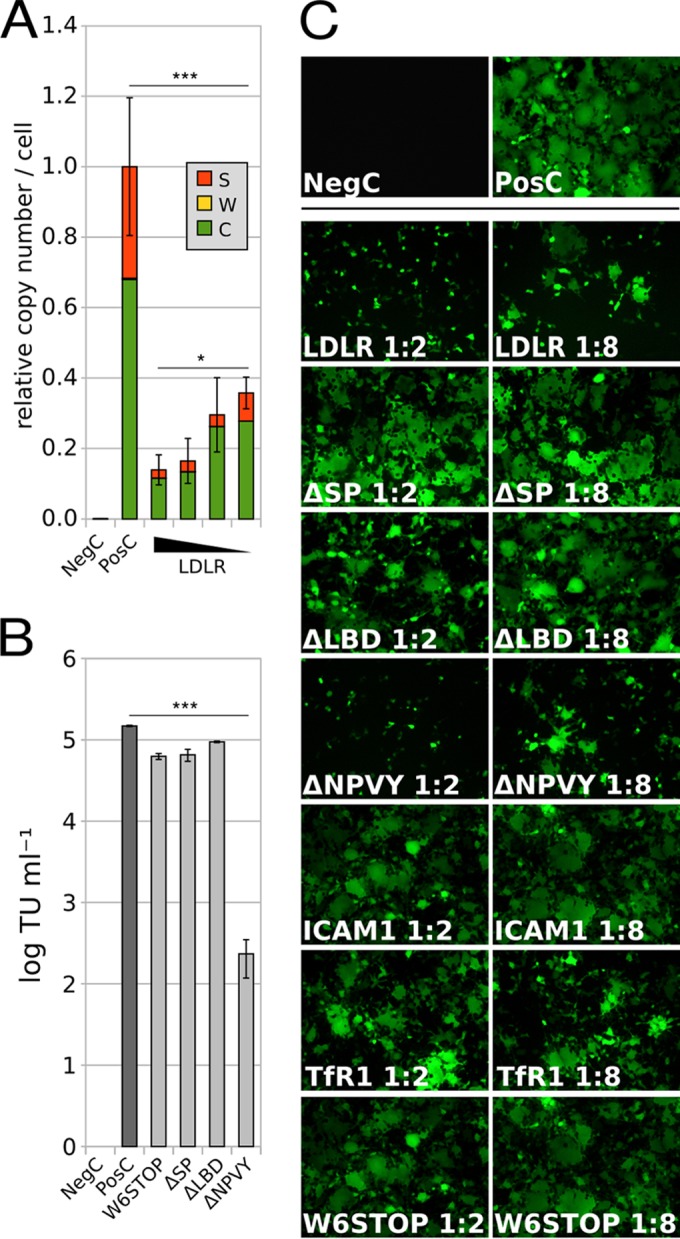FIG 2.

Upon LDLR expression, the lentiviral vector is neither trapped inside the cell nor at the cell surface. After transfection of HEK293 cells with the plasmids as in Fig. 1, the supernatant (fraction S) was saved, and cells were washed with EGTA buffer (fraction W) and pelleted (fraction C). Plasmid ratios are indicated (see the legend to Fig. 1). (A) The copy number of viral RNA was determined by RT-qPCR in each fraction (S, W, and C) relative to the positive control (roughly 2,000 copies per cell). The presence of LDLR decreases the total amount of viral RNA in fractions S, C, and W significantly [one-way ANOVA, F(4, 2) = 42.19; P < 0.0005], and the copy number is dependent on the concentration of LDLR [one-way ANOVA, F(3, 2) = 5.10; P < 0.05]. Data are the arithmetic means from 3 biological replicates ± SEM. (B) TU obtained upon cotransfection with the indicated LDLR mutants. Note the strong decrease in TU in the presence of ΔNPVY compared to the other mutants [one-way ANOVA, F(4, 2) = 37.22; P < 0.0005]. Data are the arithmetic means from triplicate measurements ± 2 SD. (C) Live-cell fluorescence microscopy of HEK293 cells transfected with the “virus-producing plasmids” together with the mutated plasmids, as indicated, during virus production. Note the virtual absence of syncytia even at small amounts of transfected wild-type LDLR and ΔNPVY plasmids. *, P < 0.05; **, P < 0.005; ***, P < 0.0005.
